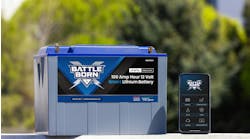This is Part 1 of the three-part story.
In heavy-duty trucking, the profit margins are slim and the margin for error is even slimmer. And even the mightiest fleets with the best drivers can be brought down by weak accounting and a poor procurement strategy.
But what do you do when the pockmarked roads, intense weather, and time itself take their toll, and fleets need to refresh their ranks? There are several options, from buying new or used to leasing or renting. Then you must decide how long you’ll keep the asset, or as the odometer creeps up over half a million miles, perhaps overhaul and try to hit a million or more miles.
That’s the question many are asking right now as their regular trade-out cycle approaches. But they also must prepare for the Environmental Protection Agency’s ultra-low NOx final rule that takes effect for model year 2027 heavy-duty trucks. Called “Control of Air Pollution from New Motor Vehicles: Heavy-Duty Engine and Vehicle Standards,” the regulation reduces NOx down to near zero. And the cost and uncertainty over the new emissions-compliant technology will have fleets changing things up in the next few years.
For starters, the new technology has made MY2025 and MY2026 trucks, which won’t cost as much as MY2027 and later vehicles and use familiar technology, an attractive (frankly, downright gorgeous) potential alternative. Known as a prebuy, the strategy is a way for fleets to hit the snooze button on unproven new emissions systems that otherwise might keep them up at night.
And the last time regulations forced OEMs to install new emissions systems, “it didn’t go well; those trucks really weren’t reliable,” noted Jim Lager, EVP of sales and rental at Penske Truck Leasing.
Many of Lager’s contemporaries can still vividly recall scores of their diesel trucks being down at any given time because of faulty selective catalyst reduction and engine gas recirculation systems.
“There are scars in the industry from that,” offered Brian Antonellis, current SVP of fleet operations at Fleet Advantage, who was a director of PepsiCo’s fleet in the early 2010s when downtime due to aftertreatment issues was an epidemic. “It was very challenging …people just assumed the technology was going to work.”
Skepticism is far more rampant now. As one of the largest logistics and leasing companies out there, Penske works closely with the OEMs, and Lager feels confident the industry has learned from that initial emissions system rollout.
“I don’t think reliability is going to be that big a problem,” Lager assured, though he has been around long enough, starting as a trailer mechanic, to expect the unexpected. “But it could be. Then you’ve got uptime problems and costs and a lot of other things that go along with that unknown commodity.”
If you’ve been napping through all the latest developments, we’ll catch you up so you can get closer to knowing how to proceed with your procurement strategy.
Mitigating factors
As you may recall, 2019 was an idyllic time, almost like a Renaissance painting came to life, where everything seemed to make sense, people got along and even talked to each other in person. It was also a banner year for Class 8 truck makers, who notched 276,000 sales. That was five years ago, and so all those trucks—figuring they average 100,000 miles a year—are reaching a depressing milestone.
“When you’re managing the life cycle, you start to see mpg drop off and the [repair and maintenance] cost curve increases around 450,000 miles,” Antonellis explained, “So we target that 450,000 to 500,000 miles as a time to replace.”
Antonellis emphasized that fleets should consider the total cost of ownership more than acquisition costs, especially as fuel degradation kicks in and components need to be replaced.
“Think about it,” he offered. “About 75% of the total cost of operating a truck is in fuel and maintenance, and 61% of it is in fuel … Being able to target that replacement cycle and get it pretty close so you don’t run an extra year with an R&M cost that increases up to 13, 14, 15 cents a mile is crucial.”
That target isn’t as easy to hit for most fleets right now. Back in 2019, the economy was great, and the interest rate set by the Federal Reserve was under 2%. Even with the first rate decrease since March 2020, it’s still around 5%.
The EPA regulations looming just a few years away are calling for OEMs to produce more efficient, longer-lasting engines, driving down current NOx standards by 80%. An earlier 2007 rule limited NOx to 1.2-1.5 grams per horsepower-hour during normal operation. The new requirement during operation is 0.035 g/bhp-hr, or 98% less. The emission system useful life has increased to 650,000 miles from the current 435,000 miles.
To meet stricter EPA and CARB standards, OEMs have already started to make changes. Paccar’s MX-13 engine, for example, will include a compact twin assembly featuring an electric heater powered by a 48-volt generator in the flywheel of the MX-13 to provide lower NOx output, as well as lengthen the SCR, according to Joe Vatalaro, director of maintenance at PacLease.
To avoid having to deal with the more expensive and complex engines and new emissions systems that meet those requirements, the heavy-duty sector saw a huge prebuy in 2006: 284,000 units. In 2026, the industry is bracing for the same.
Hadley Benton, VP of business development for Fleet Advantage, suggests prebuying mitigates two risks. “There’s the risk of the new technology: ‘If it breaks down, what do I do?” he said. “The other risk is the increased cost. We’re talking about a $30,000 premium, and we just learned [in August] that the majority of that increase is related to warranty.”
According to Penske’s Lager, MY2027 Class 8 trucks will cost 3-4% more.
On the positive side for MY2027, Benton noted, “The newer equipment is going to be more efficient, so you should get better mpg, and obviously, you’ll have lower maintenance and repair costs because it’s new.”
In this economy, that extra money per truck, combined with the interest on that truck, might not be offset by slightly better fuel economy, and the maintenance savings could be canceled out if a problem with the new system causes downtime.
So what should be done? Prebuy in 2026 and everything will work out, right? But time is running out for that choice.
Lager said at Penske, account representatives who once helped fleet customers look six months out now need to start planning 18 months ahead at minimum, but three years would be better.
“The general guideline in the past has been that you need to plan ahead six to 12 months, but I think that is changing when you’re looking at prebuys for the emission standards,” said Vatalaro, citing potential production delays and extended lead times.
And many took that advice based on the MY2026 order books, another reason to act fast.
“Everybody believes this is going to be the largest prebuy,” Antonellis told Fleet Maintenance back in March. “Talking to a lot of the OEMs, they’re already saying they’re pretty much sold out in 2026.”
Magnus Koeck, VP of strategy, marketing and brand management at Volvo Trucks, also predicted that “In 2026 the total market could be the highest we have ever seen.”
Also, last March, retiring Daimler Truck CEO Martin Daum said the market leader will increase its capacity to meet demand: “If we see in 2025 and 2026 a pull-forward effect, we’ll go from there.”
There is still a little time left.
“I think we’re going to see availability in the first half, and we’re going to see demand tightening and going back to allocation in the second half of calendar year 2025,” Antonellis stated.
As you make your plans, these experts advise that you educate yourself not only on EPA rules but also on the separate rules set by the California Air Resources Board. And don’t let the snooze button deter you from taking action.
“This prebuy is really setting up as another event like COVID, only we know it’s coming, so everybody can be prepared,” Fleet Advantage’s Benton noted. “You don’t want to wait till the last minute. You really have to start now. If companies haven’t been thinking about this already and started planning their procurement strategy, they’re almost behind the eight ball.”
In Part 2 we will discuss the how to make the procuremnt decision between buying new or used, as well as leasing.





